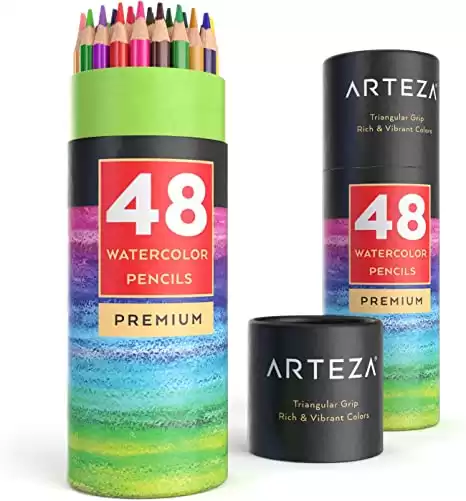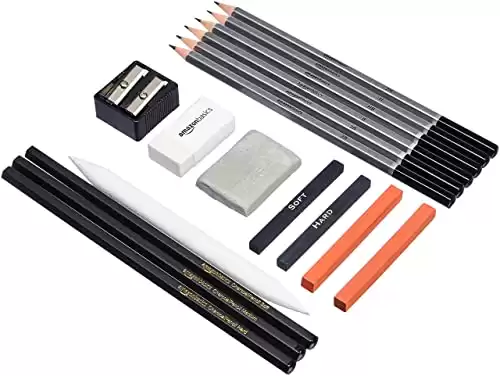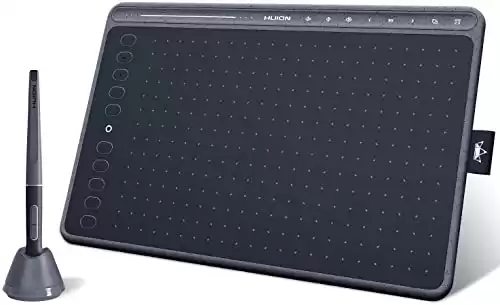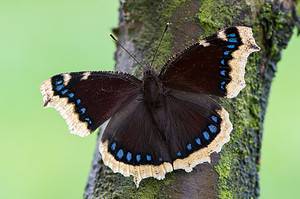Butterflies are surprisingly complex. At a distance, they look like pretty wings attached to a little body. Then, there are those spindly legs that look like sticks attached to a tiny sausage. Yet, these insects are marvels of engineering.
I’ll walk you through drawing one of these beautiful creatures, complete with a flower for it to perch on. While I created it in Photoshop and drew it with Huion HS611 graphics tablet, all the steps work just as well on paper.
One thing that you may find helpful is a book on butterflies and moths. There are thousands of species from which to choose, and each one has a few differences that make it unique.
| Supplies | Reason for Preference |
|---|---|
| Drawing paper of your choice | If you’re using watercolor pencils, heavier-weight paper is ideal. You can use either watercolor paper or, my favorite, a smooth Bristol. |
| Drawing pencils | Amazon has a great selection, but take a look at the dollar store near you. You might be surprised. |
| Colored pencils | You don’t need a giant set for this project. A small set with a few vibrant colors will do the trick. |
| Erasers | Make sure you have both a moldable putty-type eraser and a standard rubber eraser. |
| Blending stumps or pencil | Blending stumps and pencils allow you to be precise. |
| White gel pen | Use this to add highlights to your drawing. |
1 – Laying the Foundation for Your Butterfly Drawing
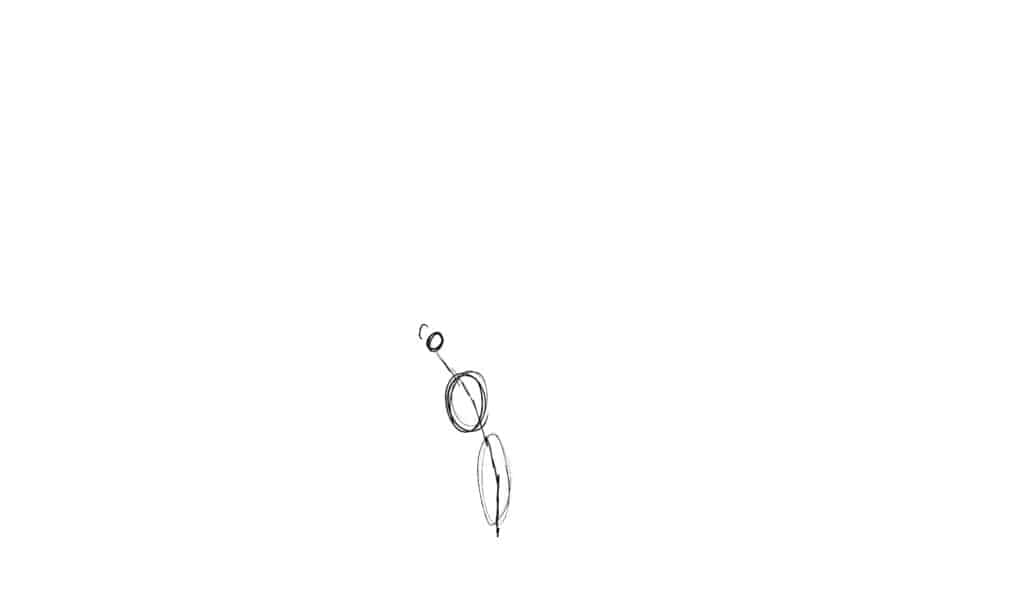
I like to separate the structural steps leading up to the butterfly’s outline into a couple of baby steps. It’s less chaotic visually and makes a more sense than tossing the whole process in front of you at once. Start with the body line, then draw a circle about 2/3 of the way up, an oval below it, and a small circle at the top.
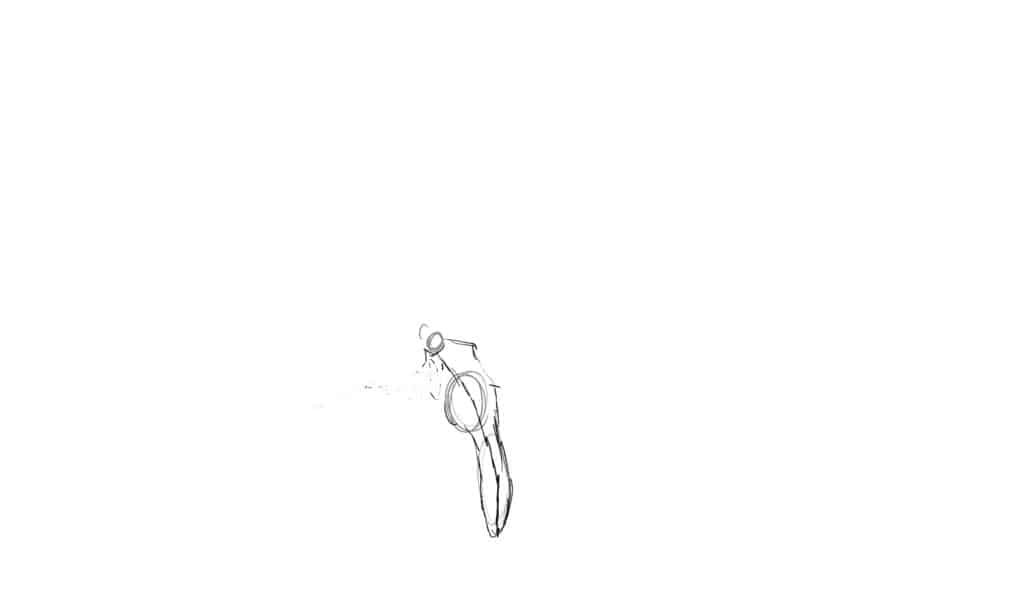
After you’re happy with the proportions, sketch a body outline around the circles. Be sure to draw very gently; most of this will get erased or blended into the final drawing.
I know it may seem counter-intuitive to draw something that you’re planning to erase later. However, think of it like a bookmark. It holds your place until you’re ready to come back to the book. These structural circles and lines are the same – they hold space and help you line up the proportions of whatever it is you’re drawing.
2 – Create a Rough Outline

Lightly sketch a body around the shapes you’ve created. Once you’re done with that, add its antennae, legs, and tongue (proboscis). For now, make them simple lines. There’s no reason to get more detailed than that yet.

Now that you have a rough idea of the body’s outline, it’s time to add the wings.
Butterfly wings are roughly triangle-shaped. Some have lobes on the bottom wing, like the butterfly we are drawing. Start with light triangles, and angle them similarly to the one you see here. Add scalloped edges if you like, and take a moment to round the corners. There aren’t many sharp corners in nature, so we need to soften those.
3 – Add Pattern Details to Your Butterfly Drawing

Butterfly wings are surprisingly complex. When they come out of their chrysalis, they’re soft and folded around themselves. The fluttering little beauties then spend about an hour pumping fluids into their wings to make them unfurl.
Even after they’re fully formed and flying, you can see the veins. Just like other living creatures, they’ll spend their lives circulating fluids through their bodies. As you draw these structures, remember that you’ll be drawing shadows and highlights onto them later. The lines themselves won’t really be visible.
Give your butterfly a pattern. It doesn’t have to look like mine, and mine didn’t wind up exactly as I sketched initially either.
It’s art. Make it yours.
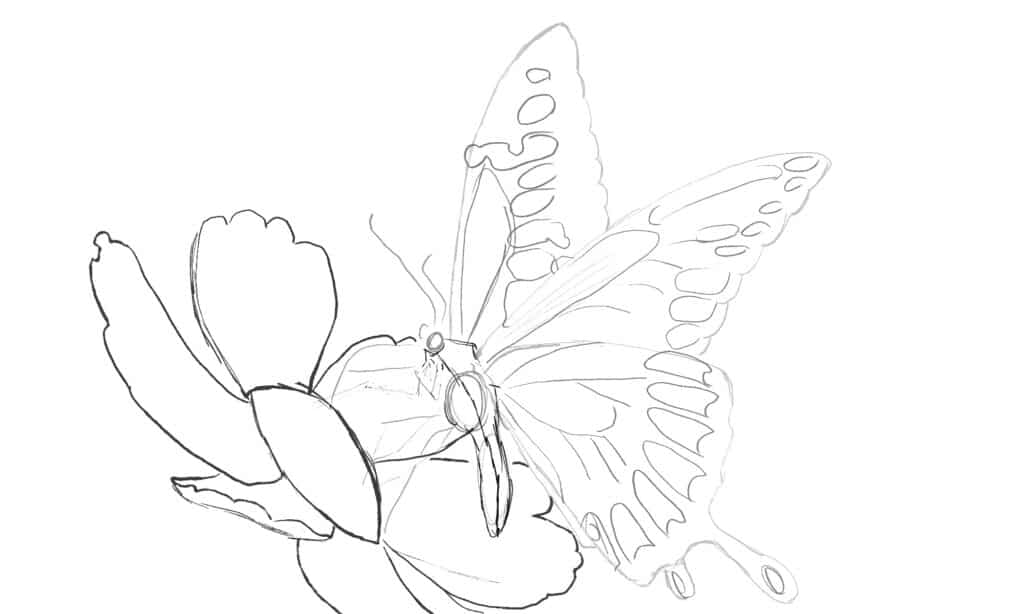
One final touch on the sketch – if you’re so inclined. I love flowers and thought it would be a pretty addition to the whole thing. There are a couple of petals that sit behind the butterfly, so don’t outline them completely.
4 – Clean Up the Butterfly Outline

Ready? Clean up the outline by removing the little circles and the body line from the first step. Take a moment to redraw the outline and erase the messy lines. Leave just enough for you to add color and details. While you’re here, add a stem to the flower.
5 – Color Your Butterfly Drawing
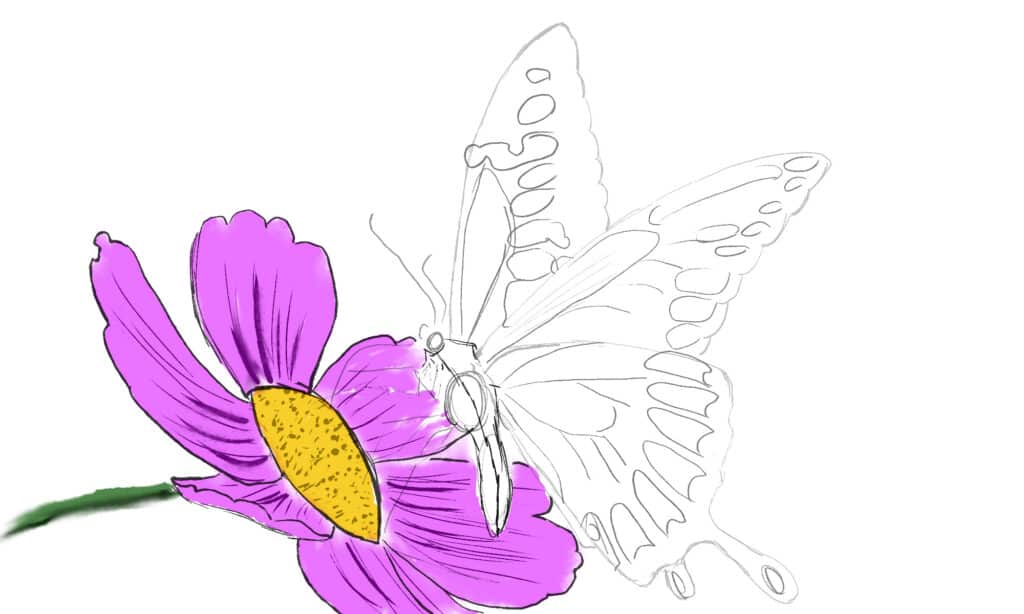
Always start with the background. It’s so much easier than trying to draw it in later. I’ve tried to start with the foreground and then draw in the background, but it always leaves more traces – evidence of brush strokes or pencil strokes – behind. As a result, I take the time to start with the objects that are furthest away in a drawing, then fill in the ones toward the front.
For my flower, I decided on purple petals with a gold center. The petals have little ripples and creases that become deeper as you approach the center of the flower. For those, I used a darker purple.
Digital artists: Of course, if you’re working in Photoshop, that’s not a problem. Just add another layer behind the butterfly for any background you would like to create.
Paper artists: Color the background (flower) up to the very edge of the butterfly outline.
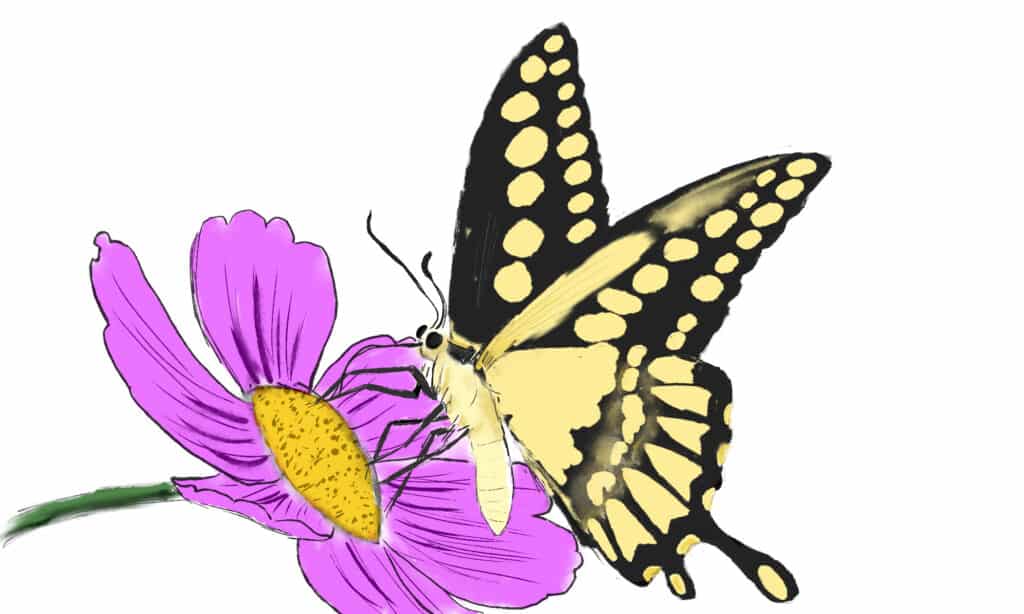
Color your butterfly drawing. On the top of the wings, the colors are a little brighter than they are on the bottom. Sometimes they’re downright drab on the bottom, but use your best judgment and make it look good to you.
Digital artists: You’ll need several different layers. For the flower, create four – one for each color. The butterfly only needs two.
Here’s the layer order; from top to bottom, they’re numbered:
- Butterfly- yellow
- Butterfly – black
- Flower center’s spots – brown
- Flower center’s color – yellow/gold
- Flower petals – purple
- Flower stem – green
Paper artists: Start with the yellow, then add the black around the edges. On the lower right wing, I blurred some of the yellow markings into the black area around them. It’s probably easier to spot yellow and black together, then use a clean blending stump to blend them together gently. Experiment a little on a separate piece of paper so you can make it look the way you want.
6 – Adding a Few Shadows to Your Butterfly Drawing
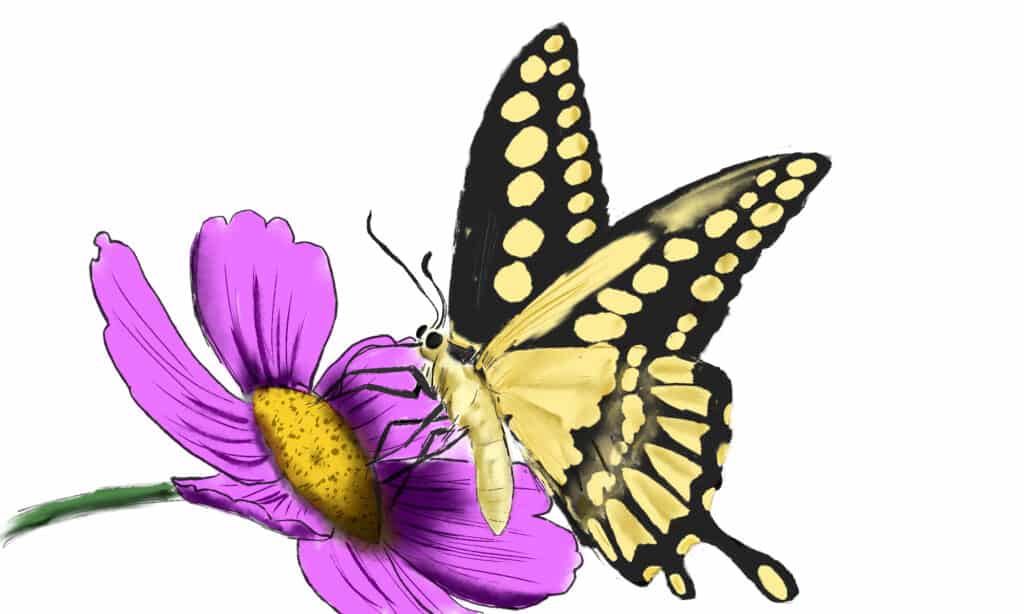
Now for the shadows.
Think about where the light source is. This will probably be the hardest part of any drawing you do. I know it always was for me, and I still mess it up sometimes. So don’t worry.
Shading Your Flower
The flower stem won’t take long. Add some darker green to the bottom edge and blend up from the bottom toward the top. Allow it to fade toward the top edge of the stem to give it a rounded shape.
Start with the flower center; use a darker shade of the color you used for the center. In my drawing, the light is coming from the top left, just above the flower petals. So, the shadows will be deeper on the opposite side. To give it a rounded look, curve the shadow around the crown of the center. Blend the edges gently
Now, move on to the flower petals and do the same thing. Use a darker shade of the petal’s color and add it to the areas in shadow. Gently blend the shadows along the lines where the creases in the petals appear.
Shading Your Butterfly Drawing
The butterfly is a little trickier, but perhaps more delicate is a better phrase. For the body, use a darker shade of the same color. Start by adding a little bit of shading around the area where its legs attach; they are usually a little fuzzy. Imagine an arm of sorts wearing a fuzzy jacket; it’s slightly rounded and has a real shape, even though it’s tiny. Add shading to the area right behind its eye and under its “chin.” Then, do the same thing around the creases in its abdomen and along the edges. Blend those shadows.
The wings are last to get any shadows. They’re basically flat with some veins that stick out ever so slightly. Add shading along the lower edge of the veins and gently blend it.
The direction in shading is often just as important as the shading itself. It can make or break the visual appearance because even if you don’t exactly know what’s wrong, the brain knows something is off.
Digital artists: Create a new layer for the shadows, and set it to multiply. If you want to separate the shadows for the butterfly and for the flower, that’s fine; just create an extra layer set to multiply.
Paper artists: Start at the top left and work toward the bottom right. Unless you’re left-handed, then start at the top right. It will help you keep from smudging things you want to stay clean.
After your color and shading look good, take a damp paintbrush and wet the colors to make them brighten up.
7 – Add Highlights to Your Butterfly Drawing

Ready for it? You’re almost done!
Add selective highlights to finish your butterfly drawing. Remember that the light is coming from the upper left corner.
Flower Highlights
If the light is coming from the upper left, you’ll want to have a few highlights along a sliver of the petals’ edges, and in the creases of the petals next to the shadows you already placed. On the lower right area of the flower, add highlights to the outer one-quarter or so of the petal. Shape the highlights just as you would a shadow.
The center of the flower will have a small highlight too, but most flower centers don’t reflect a lot of light. So make this subtle.
Don’t forget a small bit of light along the top side of the stem!
Butterfly Highlights
Start with the eyes and legs. The eyes are round orbs, so you’ll need to shape the highlights the same way you did in the shadows of the flower center. Add a little thin band of light along the top edges of the legs; then, soften the edges a little bit.
Now for the wings. Place a little highlight along the left edges of the wings and the upper side of its veins. As with the others, soften the edges of the highlights, but don’t blend it in completely.
Digital artists: In a new layer, use white in the areas that need highlights. Leave it at normal, and soften the edges a little.
Paper Artists: On the off chance you’re not using watercolor pencils, you can use a moldable eraser to lift graphite or colored pencil off the page. If you’re using watercolor pencils, use a white gel pen and dot the highlights in, smudging them gently before it dries.
Finishing Your Butterfly Drawing
This last step is pretty easy but really important.
Ready for it?
Put your butterfly drawing down. Really! Set it aside for a day or two, then come back to it. You may see a few things to add or adjust, or you may realize that it’s gorgeous just the way it is.
One of the hardest things to do as an artist is to stop adding and adjusting things. It’s also vital. So give your eyes a break, and if you really don’t like it, draw another one!
- 157 lb. paper with neutral pH
- Sturdy, 2-ply paper with smooth rendering surface
- Perfect for pencil, pen, dry brush, and other mediums
- 11" x 14"
- Made in the USA
- Includes 48 artist-grade colored pencils
- Highly pigmented
- Water-soluble
- Unique triangular design makes these pre-sharpened watercolor pencils easier to hold and control
- Break-resistant
- Designed for artists of all skill levels
- 17-piece set includes pencils, charcoal pencils, compressed sketch sticks
- Also includes a standard eraser, a kneaded eraser, a blender/smudge stick, and a dual-barrel sharpener
- Allows artists to experiment and combine different techniques
- Budget-friendly
- Set of 2
- Add a pop of milky white color to any artwork
- Features smooth gel ink
- Works equally well on light or dark-colored paper
- Latex-free grip for comfortable drawing
- Pack of 6
- Kneaded rubber/gummy erasers
- Erases and/or lightens most dry media
- Also helpful for blending, highlighting, shading, smoothing, correcting, and brightening drawings
- Easy to clean by kneading between your fingers
- This is the first graphics tablet equipped with 8 multimedia keys
- The multimedia keys are intuitive and can be used for a variety of artistic needs
- Can be connected with Android 6.0 (or later) phones or tablets via an adapter
- Battery-free stylus doesn't require a battery or charger
- Sleek and slim design available in 3 colors?
- Wear on either hand
- Prevents smudges from your hand transferring to your tablet
- Comfortable, soft, Lycra and Nylon
- Flexible
- Black
The photo featured at the top of this post is ©
Thank you for reading! Have some feedback for us? Contact the AZ Animals editorial team.





